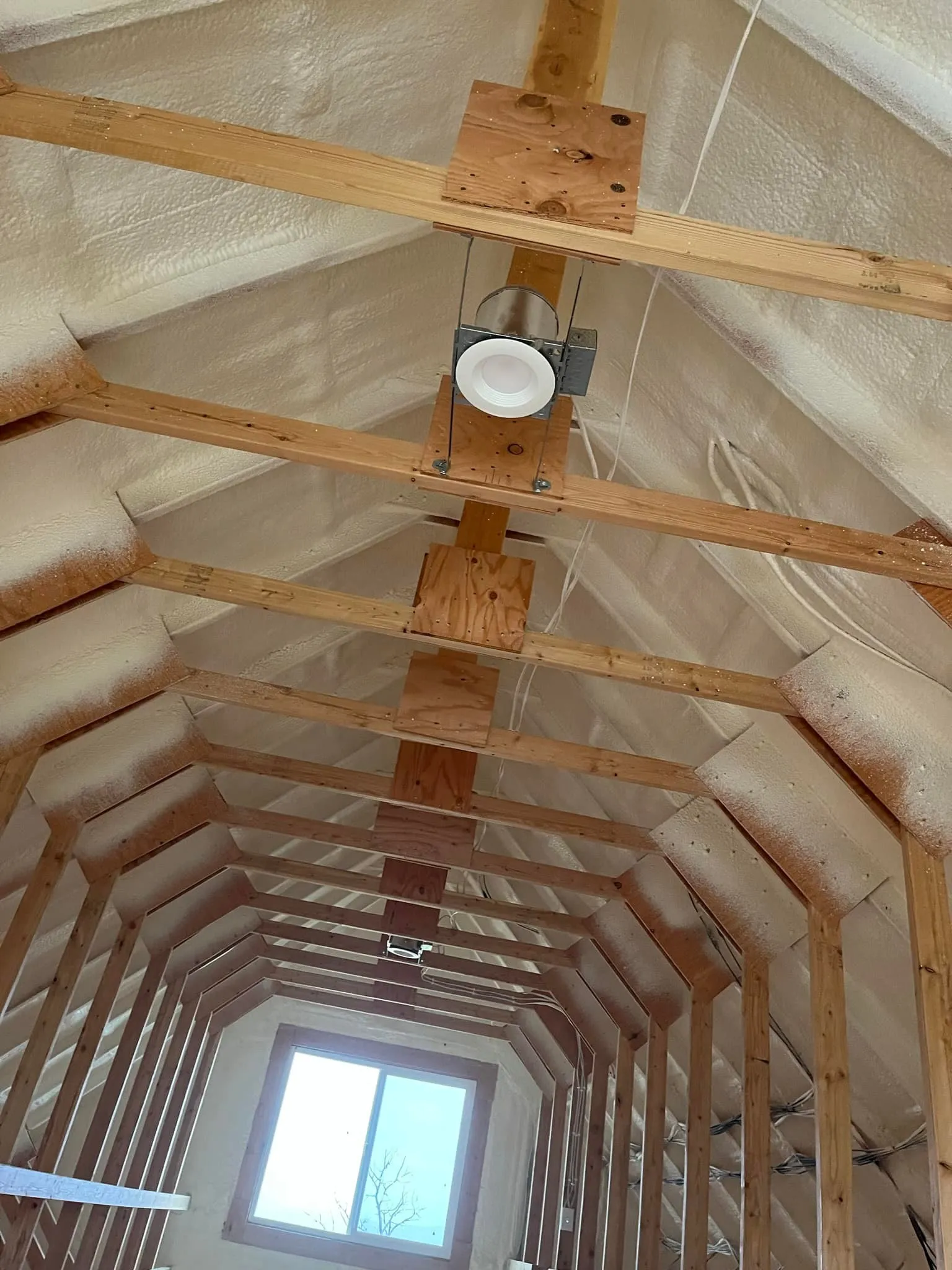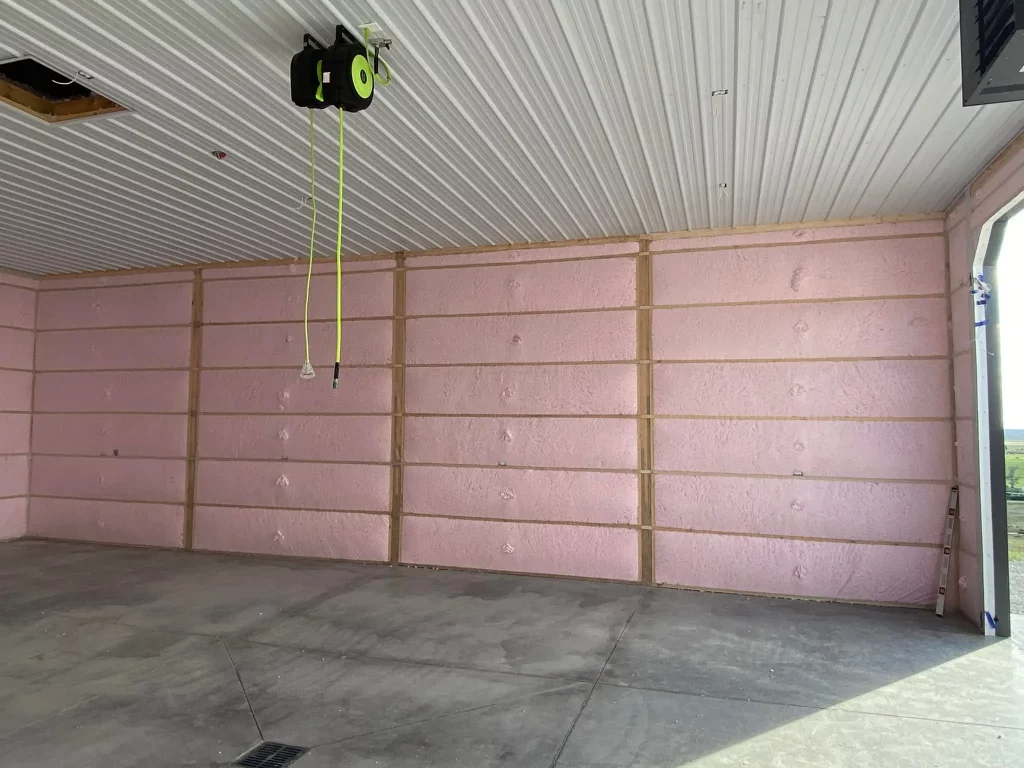
A proper insulation system stabilizes indoor temperatures and blocks outside air infiltration, creating a sense of solidity in homes around Ammon, Idaho. This setup prevents the structure from shifting with weather changes, reduces noise from wind, and minimizes drafts that make walls feel flimsy. Homeowners notice this effect right away during the area’s harsh winters, when temperatures drop below zero.
Drawing from years of handling insulation projects in eastern Idaho, where cold snaps and varying humidity demand reliable systems, this article explains the mechanics behind that solid feel. It covers insulation options suited to local conditions and shares practical steps for evaluation, giving you clear guidance on achieving better home stability without guesswork.
Insulation works by trapping air pockets that resist heat flow, keeping the home’s interior consistent. In Ammon, where average winter lows hit 15 degrees Fahrenheit, poor insulation lets cold seep in, causing uneven heating and a hollow sensation in rooms. A well-installed system counters this by maintaining even pressure inside the walls and attic.
Solidity comes from how insulation fills gaps and supports the building envelope. Drafts push air through cracks, making surfaces vibrate slightly. Sealed insulation stops that movement, so the home stands firm against gusts up to 30 miles per hour common in the Snake River Plain.
Ammon experiences over 200 days of below-freezing potential each year, according to climate data from the National Weather Service. Proper insulation cuts heat loss by up to 50%, as noted in a U.S. Department of Energy report. This efficiency makes the home feel more grounded, less prone to the creaks and shifts from rapid temperature swings.
Beyond temperature control, insulation dampens external sounds, like traffic on nearby Ammon Road or wind through the fields. Homeowners report quieter interiors and a sturdier vibe after upgrades. In summer, when highs reach 90 degrees, insulation prevents heat buildup, avoiding the stuffy, unstable feel of overheated spaces.
Check attic ventilation alongside insulation; blocked vents in Ammon’s dry air can trap moisture, weakening the solid structure over time.
Fiberglass batts suit standard wall cavities and cost around $0.50 per square foot, per HomeAdvisor data. They install easily but require precise fitting to avoid gaps that undermine solidity.
Spray foam expands to seal every crevice, ideal for Ammon’s older homes with settling foundations. Closed-cell foam adds rigidity, enhancing the overall firmness. Blown-in cellulose, made from recycled paper, fills irregular spaces well and offers good soundproofing against regional winds.
A comparison table helps match types to needs:
| Insulation Type | R-Value per Inch | Best For | Cost Range (per sq ft) | Solidity Benefit |
|---|---|---|---|---|
| Fiberglass Batts | 3.1-4.4 | Walls, attics | $0.40-$0.70 | Basic draft reduction |
| Spray Foam (Closed-Cell) | 6.5-7.0 | Rim joists, gaps | $1.00-$2.00 | Superior sealing and rigidity |
| Blown-in Cellulose | 3.2-3.8 | Attics, floors | $0.60-$1.20 | Even fill for stability |
This table uses R-value data from the U.S. Department of Energy to show thermal performance. Based on these options, choose according to home age and budget for maximum effect.
In Ammon’s alkaline soil, opt for moisture-resistant materials to prevent long-term weakening of insulation integrity.
Start with an energy audit to spot weak points, a step that reveals 20-30% more leaks than visual checks, based on Energy Star guidelines. Remove old insulation carefully to avoid disturbing asbestos in pre-1980s homes common in the area.
Workers cut and fit batts or spray foam in layers, ensuring full coverage. For attics, add baffles to maintain airflow. The process takes 2-5 days for a 2,000-square-foot home, depending on access.
Post-installation, test for air tightness with a blower door. This confirms the system delivers that solid feel by equalizing pressure.
Assess current energy bills; homes in Bonneville County average $150 monthly in winter heating, per Idaho Power reports. Higher costs signal poor insulation affecting solidity.
Review home age and construction—rambler-style houses from the 1970s often need updates for modern standards. Factor in family size; larger households generate more indoor heat, easing insulation demands.
Check local codes through the Bonneville County Building Department; permits ensure compliance with Idaho’s energy efficiency rules. Budget for professional assessment, around $300-$500, to avoid DIY errors that compromise stability.
Consider long-term savings: Insulation upgrades recoup costs in 3-5 years via lower utility bills, as calculated by the Oak Ridge National Laboratory.

Many wonder if insulation affects home value. Yes, it boosts resale by 5-7% in Idaho markets, according to a National Association of Realtors survey, due to the solid, efficient appeal.
Others ask about DIY options. Basic batt installation works for handy individuals, but spray foam demands pros for even application and safety.
Schedule inspections every five years; Ammon’s freeze-thaw cycles can shift insulation, reducing its solidifying effect.
Yes, it fills voids that allow air movement, creating a more stable structure. In Ammon, this counters the hollow echo from wind and cold.
Aim for R-49 in attics and R-19 in walls, per Idaho’s building code, to handle local winters effectively.
Quality installs endure 20-50 years, but moisture exposure in humid Ammon summers shortens life without vapor barriers.
Absolutely; as discussed in the benefits, dense materials like foam cut external sounds by 50%, enhancing the quiet, solid atmosphere inside.
Often yes—expect 15-20% energy savings, as with the efficiency gains noted earlier, making the home feel more secure against Idaho’s variable weather.
Proper insulation delivers a solid home feel by stabilizing temperatures and sealing drafts, especially vital in Ammon’s cold climate. Select types like spray foam for best results, and consider audits before changes. Evaluate specific needs, local codes, and budget to ensure lasting benefits. Review long-term energy use and comfort goals for informed choices.
For questions on insulation suited to Ammon homes, reach High Country Solutions at (307) 248-9063 or [email protected]. Discussions focus on practical assessments and options based on local conditions, helping align systems with individual home setups. This step clarifies next actions without commitment. (72 words)